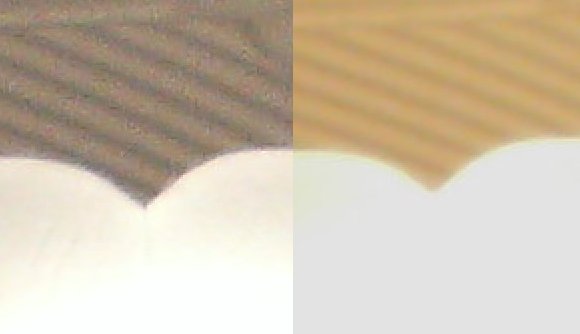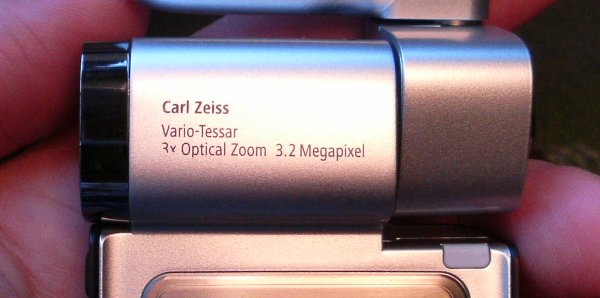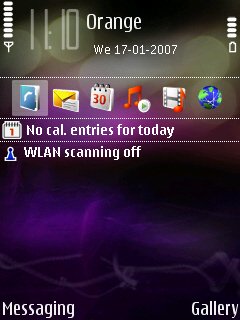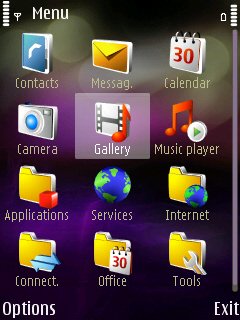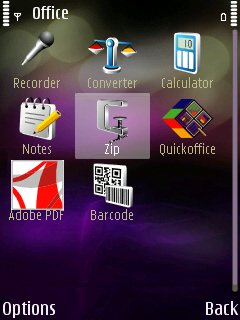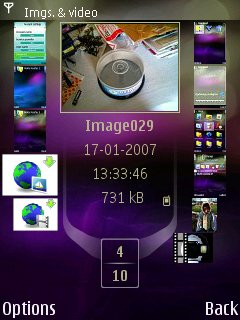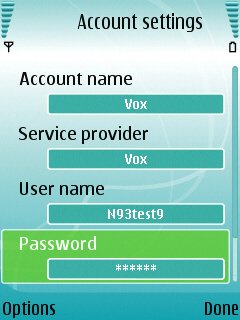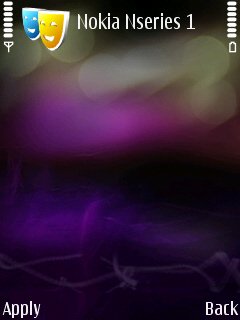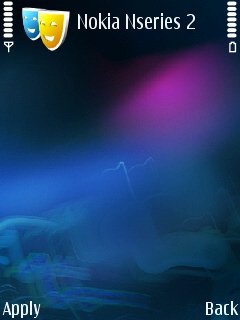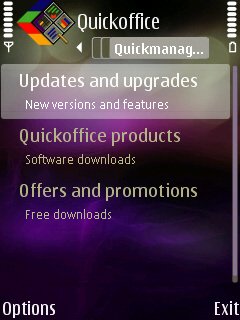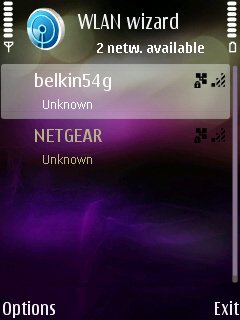
I should stress right at the outset that the Nokia N93i isn't
strictly an upgrade to the N93. The N93i is an evolution of the original design, to be sure, and the main point is that it's much slimmer and more visually appealing, thus attracting people who would have dismissed the original bulk of the N93. It remains to be seen how long the N93 stays available for, but I'd guess that the two can coexist happily for a while. The N93i is the one most newcomers will buy, but there are quite a few compromises made in the N93i design that might annoy anyone determined to buy the 'flagship' S60 smartphone. For more on the pros and cons, read on....

First impressions of the N93i are excellent, with the large mirror-backed screen prominent and attractive, with a silver surround that's unfortunately not carried down into the base unit, which remains black(ish) - the two-tone silver/black looks a little odd. The camera housing still dominates the top of the N93i, but it's been restyled since the N93 and is slightly thinner.

Using a combination of newer screen technology (the small exterior display is now OLED) and clever concave sculpting (see the diagram, right) the majority of the N93i is a good 5mm thinner than the N93. This is a huge difference and obviously THE main selling point of the newer model when picking it from a line-up. With the slimmer form comes lower weight too, 17g less than the N93, at 163g. Holding and opening up the N93i doesn't overwhelm you with its bulk, unlike the original N93. The combination of mirror top and svelte form factor transforms the device into something more instantly desirable.
Other physical improvements made in the N93i include:
- a joystick rather than d-pad for the side (camera mode) controller - this is significantly less fiddly
- a recessed lanyard mount on the bottom of the device - saving a couple of millimetres in length in one go
- a flush-fitting and more secure miniSD slot cover
- a tethered cover for the Pop-port connector - no chance of this one getting lost(!), although leaving it hanging there while you listen to music on the Pop-port stereo headset looks and feels somewhat messy
- relocation of the main speaker to the base unit - again, to help save space in the lid assembly
- a redesigned battery cover that's a lot easier to remove and reattach
- a proper SIM card recess (rather than the flimsy and fiddly clasp on the N93)
- a charging LED set underneath the mirror top
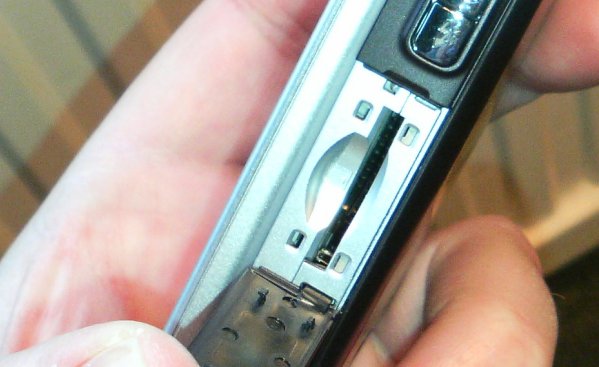
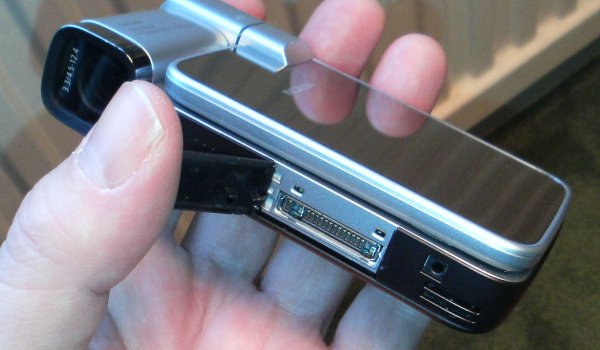
Opening up the Nokia N93i reveals changes too, both positive and negative. Most obvious is the flush, metallic keypad, probably a necessity given the new slimmer lines of the base unit. There are spidery rubber inlays to improve grip and give you a better sense of where the key boundaries are in the dark. Although this largely works well and there's a definite 'click', the amount of force needed to effect each keypress is fairly high and the N93i isn't as useable as its predecessor when it comes to text entry. I also didn't like the way there were no dividers between the Green/Edit and (more vitally) C/Red 'keys', it's going to be quite easy to go for 'C' and hit the hangup button by mistake, thus ending the application you're in.
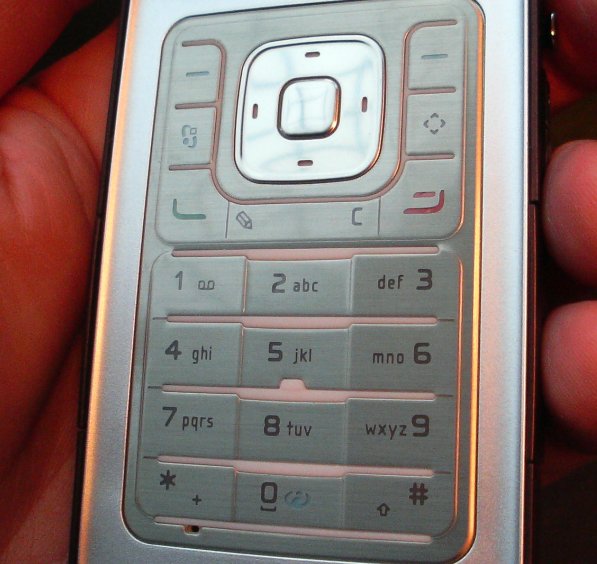
Having reckoned the N93 had just about the best display of any smartphone I'd seen (in all light conditions), the N93i blew me away, indoors at least, with its colour rendition of my photos. The N93i has 16 million colours rather than the N93's (paltry!!!) 262,000 available. What this means is that colours are more vibrant and more accurate, which is good. Not so good is that the change in screen technology has meant undistinguished performance outdoors, especially in sunlight, as shown below. The outer layer of the screen proved too reflective and consequently ruined the contrast, whereas the original N93 screen reflected nicely off the back of the display, giving excellent contrast in the brightest of light.
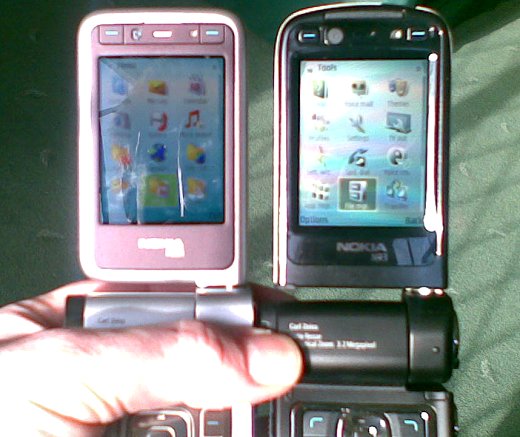
The main reason why outdoor screen contrast is important, of course, is because it's the viewfinder for all still and video camera functions, the main raison d'etre for the N93 and N93i. Although restyled, the camera seems to be identical, in terms of hardware, to that in the N93, though once you examine photos you'll realise that there is a significant difference.
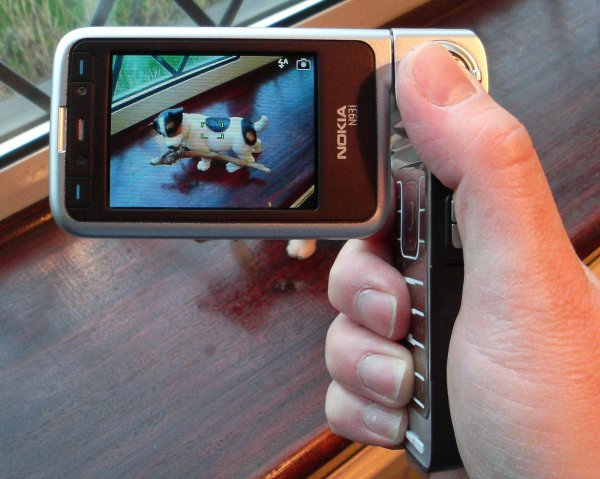
As you know, the raw CMOS sensor data from a smartphone camera gets processed by various hardware and software in order to improve contrast while reducing digital 'noise' and artificial constructs ('artefacts') brought about because of the physical layout of the sensor and optics, and because of the compression schemes used to keep the amount of data manageable. In the Nokia N93, the noise reduction seemed to be largely turned off, with the result that images were very crisp but horribly full of artefacts if you zoomed in very closely. For the N93i, there's far more noise reduction applied, with the result that artefacts (i.e. detail that isn't really there in the first place) get blurred out, to hopefully result in a more pleasing picture, even if the photo isn't apparently
quite as crisp as the same image taken on the original N93. A nice side benefit of the reduced level of artefacts is that JPG file sizes are considerably (up to 50%) smaller.
Which noise reduction setup you prefer is down to personal preference - but for most people it won't matter as there's nothing you can do to adjust it on each device - and in any case, the photos are more than good enough on both devices for semi-professional use. There are the usual range of focus presets and lighting modes (e.g.'Incandescent'), plus of course the tremendous 3x optical zoom, making the N93i as good as many standalone digital cameras. Focussing is done by the usual gentle pressing of the main shutter button and, impressively, I found the speed of auto-focus to be far quicker on the N93i than on the N93, a real boon as speed of focus has always been an N93 gripe.
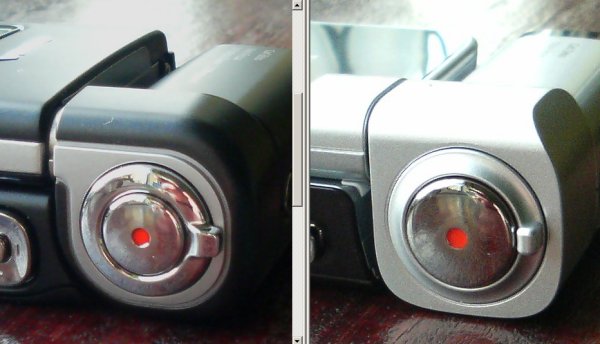
Although in theory, N93i video recording should be the same as on the N93, with the familiar VGA (640 by 480) capture at 30 frames per second, better than anything else currently available, there are several significant differences. On the plus side, there's now the option for 'Continuous auto-focus', with the usual tick-tick-ticking of the focussing mechanism activating as your subject matter changes. Being able to film items really close up is a huge advantage, probably offsetting the fact that the mechanism noises make their way onto the video soundtrack.
Talking of soundtracks, one big minus point is that the move of the stereo microphones from either side of the camera housing (on the N93) to beside the power button (on the N93i) has meant lower sound levels overall and a reduction in the stereo separation.
I've had a few minor issues with handling the MP4 files produced by the two N93 variants, but digital video is such a complicated area that I'm not prepared to lay the blame with the smartphones at this time. I can suggest you steer clear of the supplied Adobe Premiere Elements as your editing software unless you have an absolute monster dual-core PC.
Away from multimedia, the Nokia N93i is familiar on all fronts, it's standard S60 3rd Edition all the way, though with the extra tweak that you can run any application in 'landscape' mode by twisting the screen round in the other direction. And, as with the N93, you can echo your display out to a widescreen TV using the supplied TV-out lead and extra graphics chips in the smartphone. Being able to shoot video and then play it back straight away on any TV... and then upload it directly to the web to a video blog via a Wi-Fi connection is just cool, cool, cool. And blogging got even easier too, at least in theory, with the addition of Vox to the 'Open online service' option in Gallery (Flikr is already there). Just don't try this at home on a typical European data tariff...
The N93i comes with a handful of dark and moody themes, as shown below, although I preferred to use it with a much lighter theme, giving more screen clarity in daily use.
There's also the WLAN wizard, as featured in the very latest N93 firmware, helping you to define an access point directly from an initial scan of the airwaves. As with other S60 3rd Edition smartphones, the Wi-Fi reception isn't spectacular and you'll need to be close to a router for perfect operation. As with the N93, there's support for UPnP (over Wi-Fi), should your home a-v equipment support this for streaming media. Quickoffice is supplied for business use, in viewer form but with the latest Quickmanager module for over-the-air upgrading to full edit mode.
Another casualty of the slimmer form is the battery, which is now a 950mAh BL-5F rather than the 1100mAh battery in the N93. This is a little worrying to be honest - when using the N93 day to day with a reasonable amount of photography or filming, I was often out of power by nightfall. To have battery capacity
reduced is definitely cause for concern.
S60 itself shows the same maturity as in the N93, with almost 22MB of RAM free after booting, ensuring that memory problems in use are few and far between, even when starting up a Java program or a satellite navigation app.
In summary, here are the pros of each of the N93 models, based on my experience:
| Nokia N93 | Nokia N93i |
Longer battery life
Clearer sound on video recordings
Better stereo separation on video recordings
More legible and tactile numeric keypad
Much clearer display in sunlight | Slimmer, sleeker, shorter
Better on-board optical noise reduction on still images
Faster auto-focus
Option of continuous focus in video recordings
16 million colour display
Better Pop port and card covers
Better side joystick |
By necessity, I've been concentrating on technical differences from the N93, but most new users will be coming to the N93i fresh and will be blown away by its features and capabilities. N93 purists may want to hang onto their black (or silver) monsters, with better screen contrast, better video sound, proper keys and longer battery life, but for everyone else the new slimline member of the N93 family is a
very welcome addition.
The N93i looks and feels like a second generation design and will doubtless delight many a new Nseries customer as well as make jaws drop around the world, in homes and offices, both at its looks and at the sheer number of things such a relatively small device can do.

 Asian smart-phone supplier Dopod has unveiled its latest HTC-made handsets, among them version of the manufacturer's familiar BlackBerry-like S620, the 3G-friendly P3600 and the GPS-enabled P3300. But a couple of other, unexpected models stood out from the rest.
Asian smart-phone supplier Dopod has unveiled its latest HTC-made handsets, among them version of the manufacturer's familiar BlackBerry-like S620, the 3G-friendly P3600 and the GPS-enabled P3300. But a couple of other, unexpected models stood out from the rest. Top of the list is Dopod's C800, a quad-band GSM/GPRS/EDGE device based on HTC's slide-out keyboard design. Unlike the manufacturer's other such devices, the C800 isn't a 3G phone. It's othere specs are pretty standard: two megapixel camera, Bluetooth 2.0 with stereo audio, 2.8in 240 x 320 display, 802.11b Wi-Fi, 64MB of RAM, 128MB of Flash and a MicroSD card slot.
Top of the list is Dopod's C800, a quad-band GSM/GPRS/EDGE device based on HTC's slide-out keyboard design. Unlike the manufacturer's other such devices, the C800 isn't a 3G phone. It's othere specs are pretty standard: two megapixel camera, Bluetooth 2.0 with stereo audio, 2.8in 240 x 320 display, 802.11b Wi-Fi, 64MB of RAM, 128MB of Flash and a MicroSD card slot.








